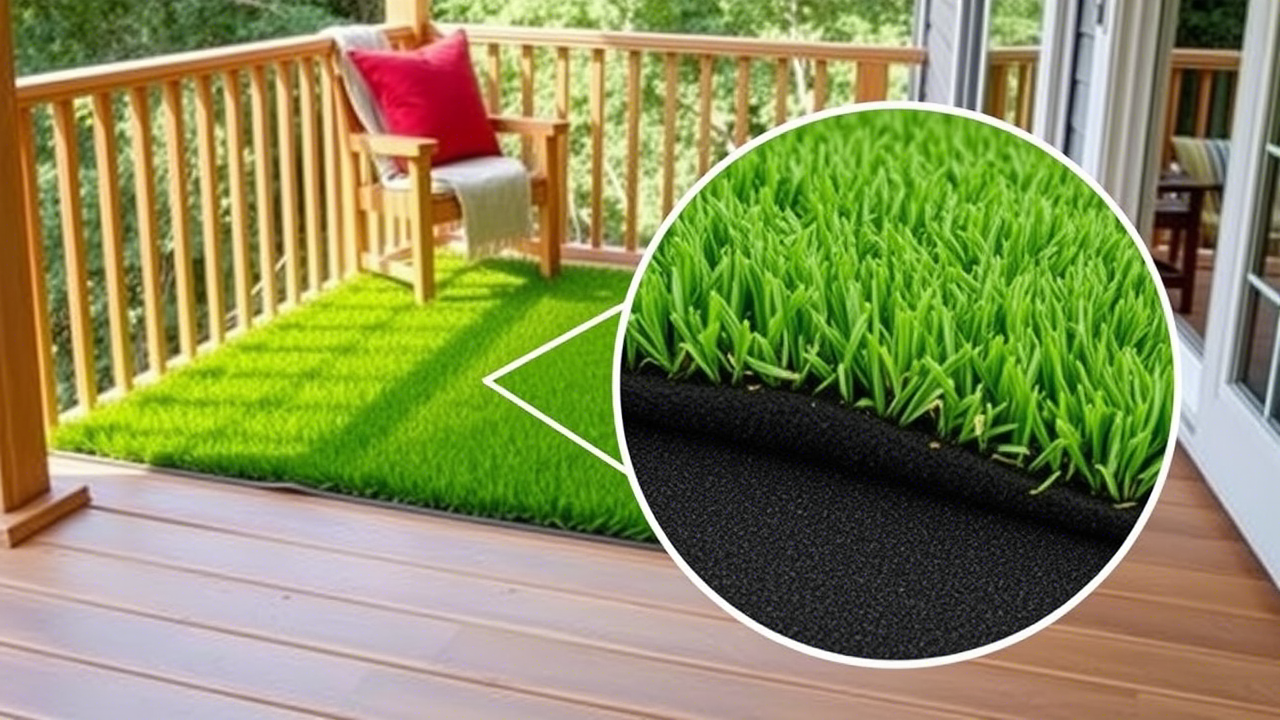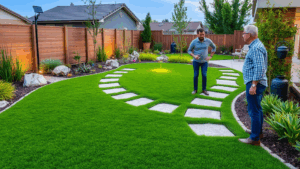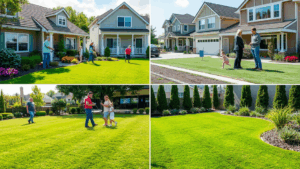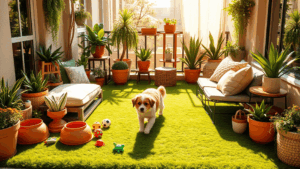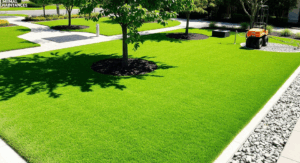In recent years, artificial lawn grass turf has grown wildly popular among homeowners, commercial property managers, and even schools. Whether it’s to save water, reduce maintenance, or simply get a lush green look all year round this turf has caught everyone’s attention.
But what really is artificial lawn grass turf? Is it truly worth your time and investment? With the increasing demand for low-maintenance, eco-friendly landscaping solutions, artificial turf has become a popular alternative to natural grass. Whether for residential backyards, commercial spaces, or sports fields, synthetic grass offers durability, aesthetic appeal, and convenience.
In this guide, we’ll take a deep dive into everything you need to know before purchasing Artificial turf from the various materials used in turf manufacturing to essential installation techniques that ensure long-lasting results. We’ll also cover common mistakes buyers often make, helping you avoid costly errors and make an informed decision.
What Is Artificial Lawn Grass Turf?
Man-made grass is a man-made surface designed to look like natural grass. It’s made using synthetic fibers usually polyethylene or polypropylene and comes in various blade lengths, colors, and textures to mimic real grass as closely as possible.
Initially developed for sports fields, today it’s used for everything from home gardens and balconies to pet areas and rooftops. People choose it to escape the hassle of mowing, watering, and seasonal patchiness of real lawns.
Why Choose Artificial Lawn Grass Turf Over Natural Grass?
There are several reasons why people are switching to Turf carpet:
Low Maintenance
Forget about fertilizing, weeding, and mowing. A simple hose-down and brush-up every now and then is enough.
Water Conservation
In areas where drought is a big issue, Fake grass helps save thousands of gallons of water annually.
Durability
It withstands heavy foot traffic, bad weather, and playful pets without turning into mud.
All-Year Green
No brown patches, ever. You get a lush green look 365 days a year.
How Is Man-made grass?
Materials Used
Most Synthetic lawn is made from:
- Polyethylene: Soft and realistic, ideal for residential lawns.
- Polypropylene: Cheaper but less durable; often used for indoor or light-use areas.
- Nylon: Extremely strong, great for sports or high-impact zones.
Backing and Infill
The turf has a backing layer that keeps everything stitched together and usually includes drainage holes. Infill materials like sand or rubber crumbs are added to support the grass blades and provide cushioning.
Different Types of Artificial Lawn Grass Turf
When you’re out shopping, you’ll notice several kinds of Synthetic lawn :
- Landscape Turf – Best for gardens and patios.
- Pet Turf – Designed to handle urine, odor, and digging.
- Playground Turf – Cushioned and safe for kids.
- Sports Turf – Built to withstand aggressive use.
Choose what suits your space and purpose best.
What to Consider Before Buying Artificial Lawn Grass Turf
Blade Length
Longer blades look lush but might bend over time. Shorter ones stay upright longer.
Density
A higher stitch count means thicker turf, which feels better underfoot and lasts longer.
Color Variation
Natural grass isn’t a single color. Pick turf that mixes light and dark green strands for a realistic effect.
UV Resistance
Ensure the product is UV stabilized so it doesn’t fade in sunlight.
Installation Tips for Artificial Lawn Grass Turf
Installing Synthetic grass isn’t rocket science, but there are a few things to keep in mind:
- Clear the Area: Remove natural grass, rocks, and debris.
- Level the Ground: Compact and level the soil for a smooth finish.
- Lay Weed Barrier: Prevents weeds from growing underneath.
- Secure the Turf: Use nails, adhesive, or turf tape depending on surface.
- Add Infill: Helps the blades stay upright and adds cushion.
Pro tip: Let the turf sit out in the sun for a few hours before installing. This relaxes the material and reduces wrinkles.
Cost of Artificial Lawn Grass Turf
The cost depends on quality, density, and installation. On average:
- Basic turf: $2 to $4 per square foot
- Premium turf: $5 to $10 per square foot
- Installation: $5 to $10 per square foot if done professionally
Yes, it’s a bit of an investment upfront but it pays off over time in saved water, zero mowing, and no fertilizers.
Pros and Cons of Artificial Lawn Grass Turf
✅ Pros:
- Low maintenance
- Looks great year-round
- Long lifespan (10–20 years)
- Good for pets and kids
❌ Cons:
- Initial cost is high
- Can heat up in direct sun
- Not biodegradable
Conclusion
Turf carpet offers a low-maintenance, eco-friendly alternative to traditional lawns. Whether you’re looking to save water, reduce yard work, or just want a yard that looks perfect year-round, turf might be the smart choice.
In the last few years, many homeowners have also started exploring artificial lawn rolls, which make DIY installation easier and more flexible. If you’re considering a lawn upgrade, now’s a great time to go synthetic your weekends and water bills will thank you.
And remember, whether it’s for the dog, the kids, or just your peace of mind, Plastic grass could be exactly what your home needs.
FAQs About Artificial Lawn Grass Turf
Q1: Does artificial lawn grass turf get hot in summer?
Yes, it can heat up under direct sun. Use shade or a cooling infill like silica sand to manage temperatures.
Q2: Is it safe for pets and children?
Absolutely. Most quality Plastic grass products are non-toxic and designed to handle pet waste and rough play.
Q3: How long does artificial lawn grass turf last?
With proper care, it can last 10–20 years depending on the quality and usage.
Q4: Can I install it myself or should I hire a professional?
DIY is possible with some research and tools, but for larger areas or complex shapes, hiring a pro ensures a flawless finish.

